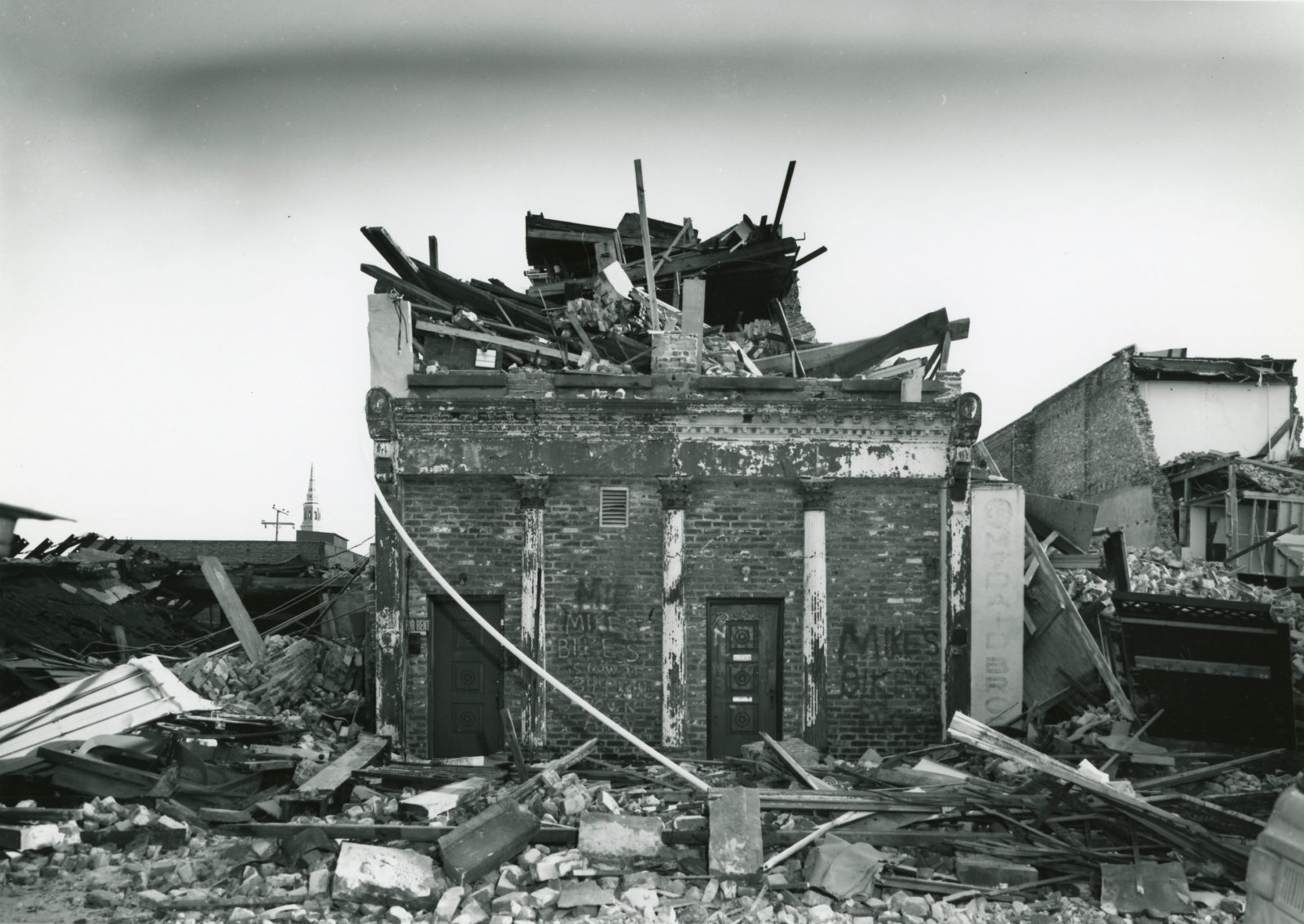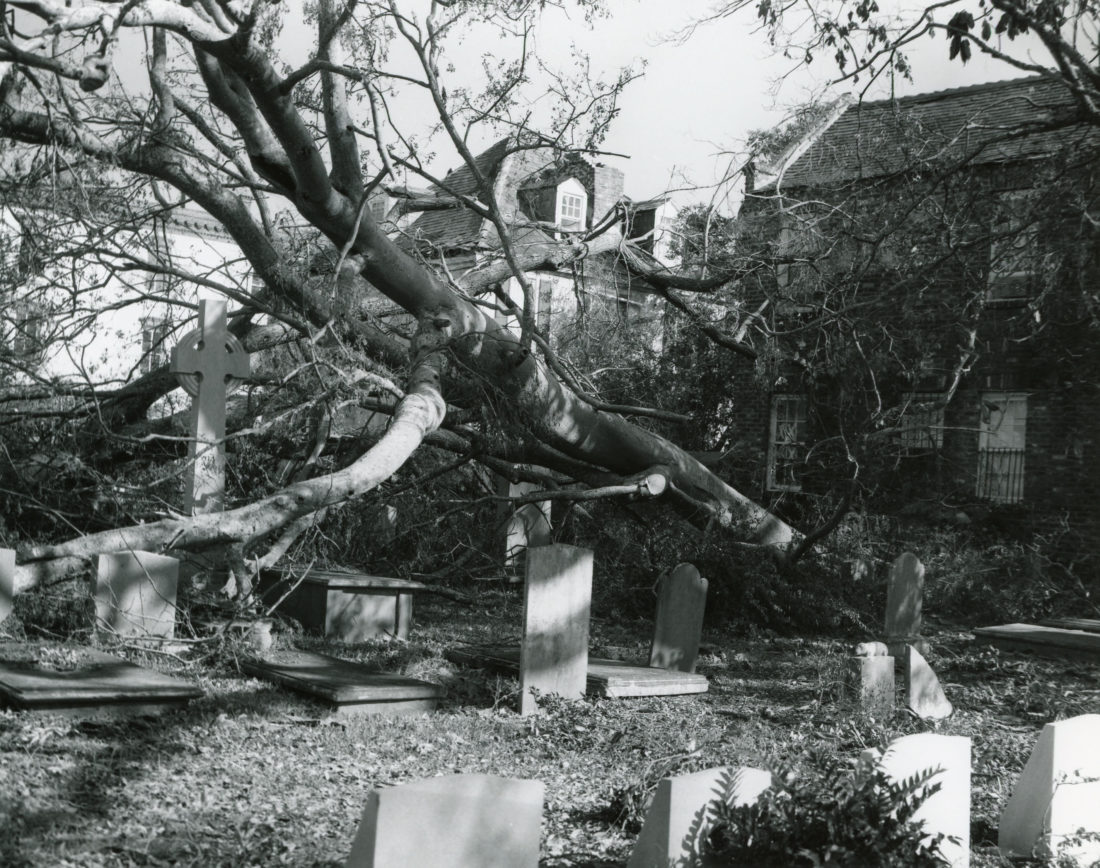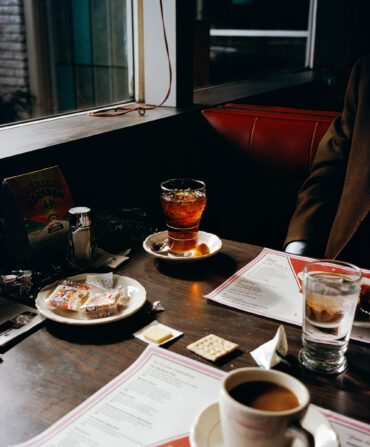
The remains of a building on Hayne Street, just north of the Charleston City Market downtown.
Photo: Photo by William J. Graham courtesy of Historic Charleston Foundation
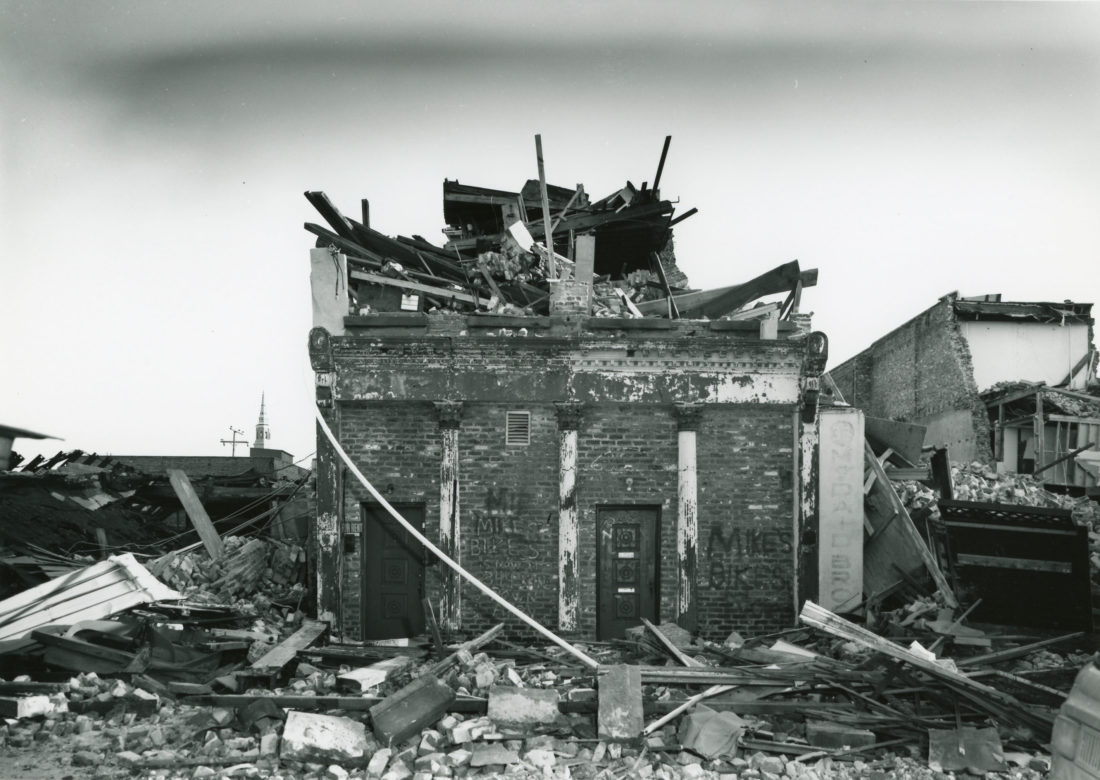
A building at 35 Hayne Street sits amid the rubble.
Photo: Photo by Jack E. Boucher courtesy of Historic Charleston Foundation

The corner of King and Spring streets.
Photo: Photo by Jack E. Boucher courtesy of Historic Charleston Foundation
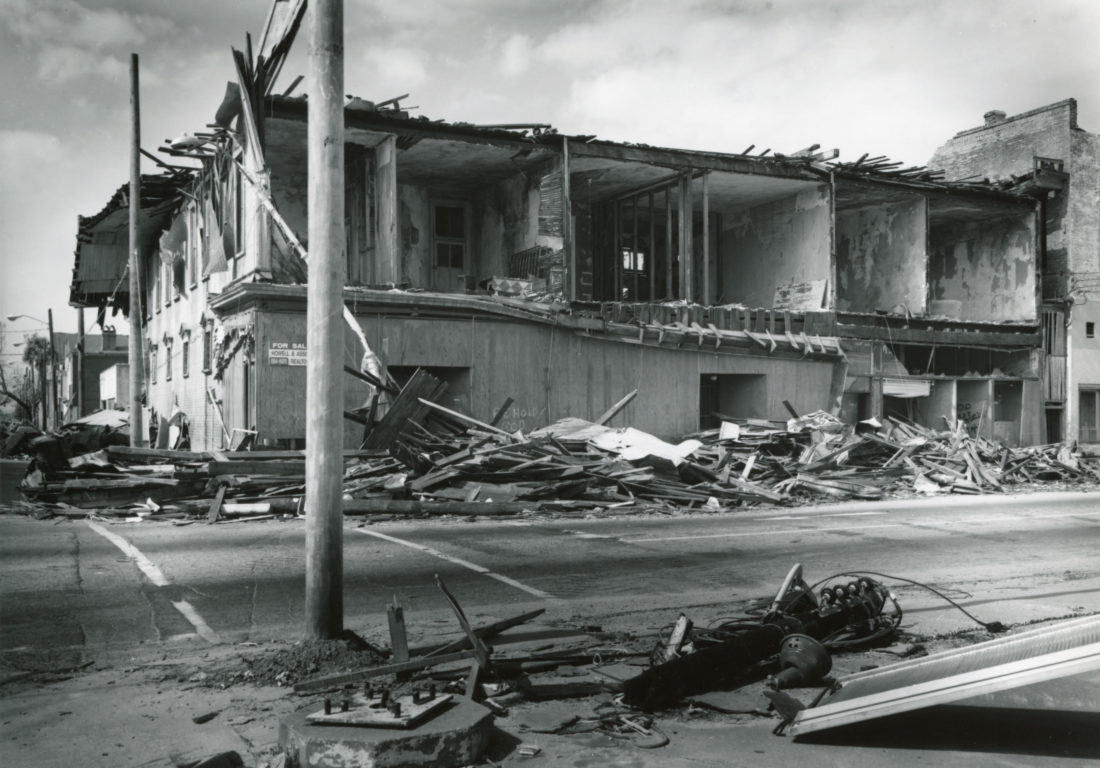
A front view of the building on the corner of King and Spring streets.
Photo: Photo by Jack E. Boucher courtesy of Historic Charleston Foundation
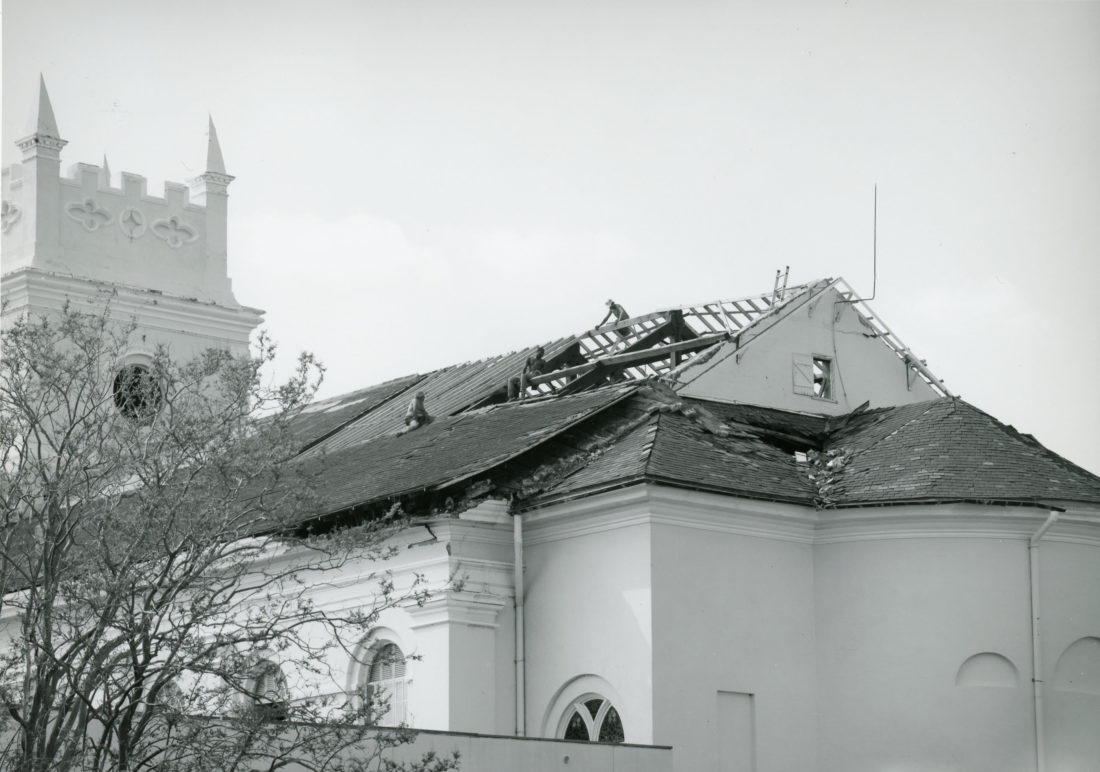
Men inspect the roof of the circa 1816 Cathedral of St. Luke and St. Paul, west of King Street, for damage.
Photo: Jack E. Boucher courtesy of Historic Charleston Foundation.
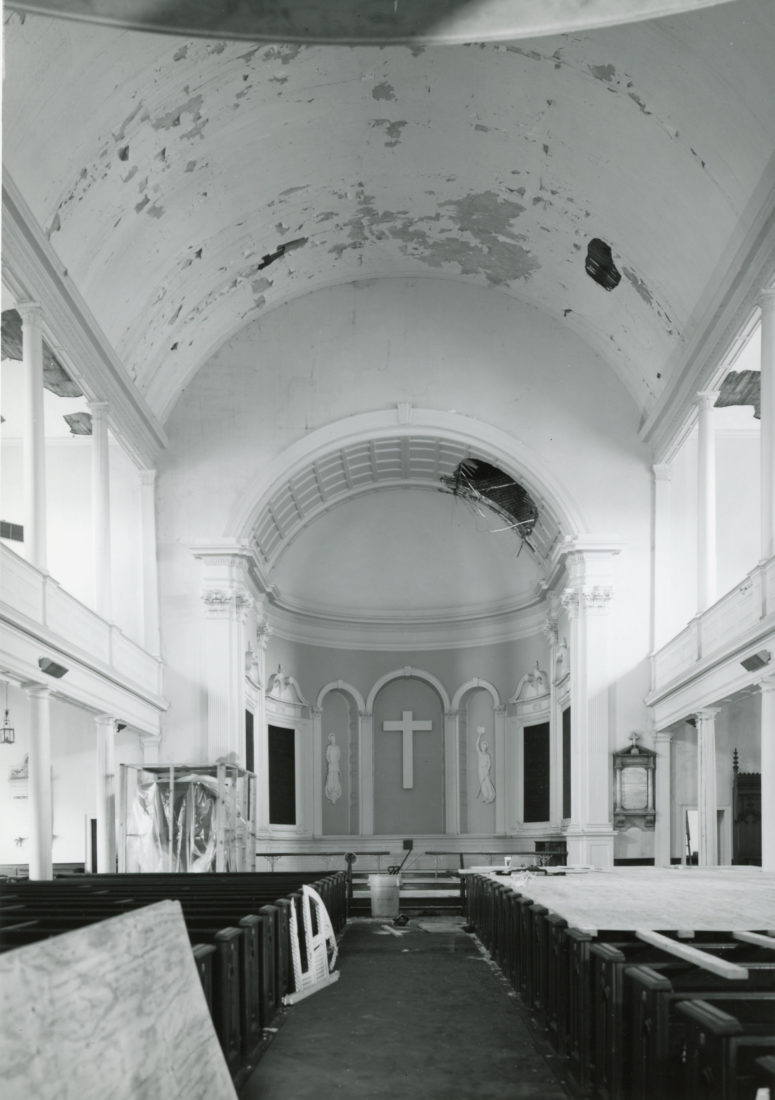
The interior of the Cathedral of St. Luke and St. Paul.
Photo: Photo by Jack E. Boucher courtesy of Historic Charleston Foundation
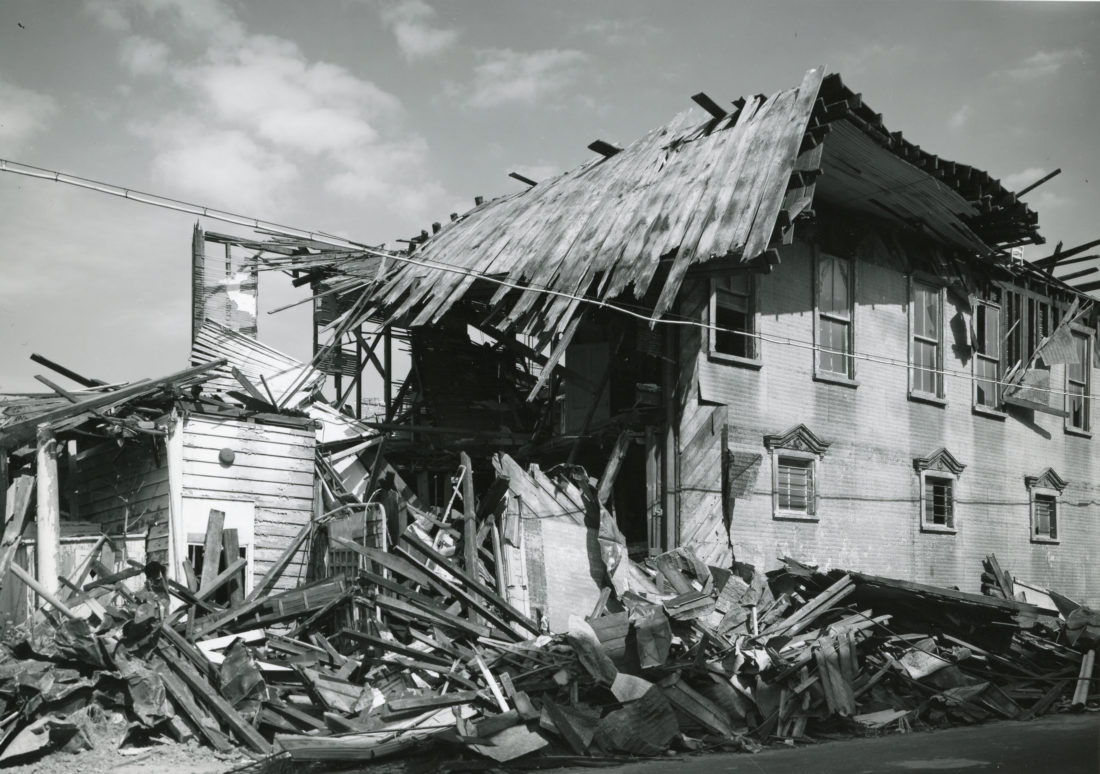
A dismantled roof hangs over a building on the corner of King and Spring Streets.
Photo: Photo by Jack E. Boucher courtesy of Historic Charleston Foundation
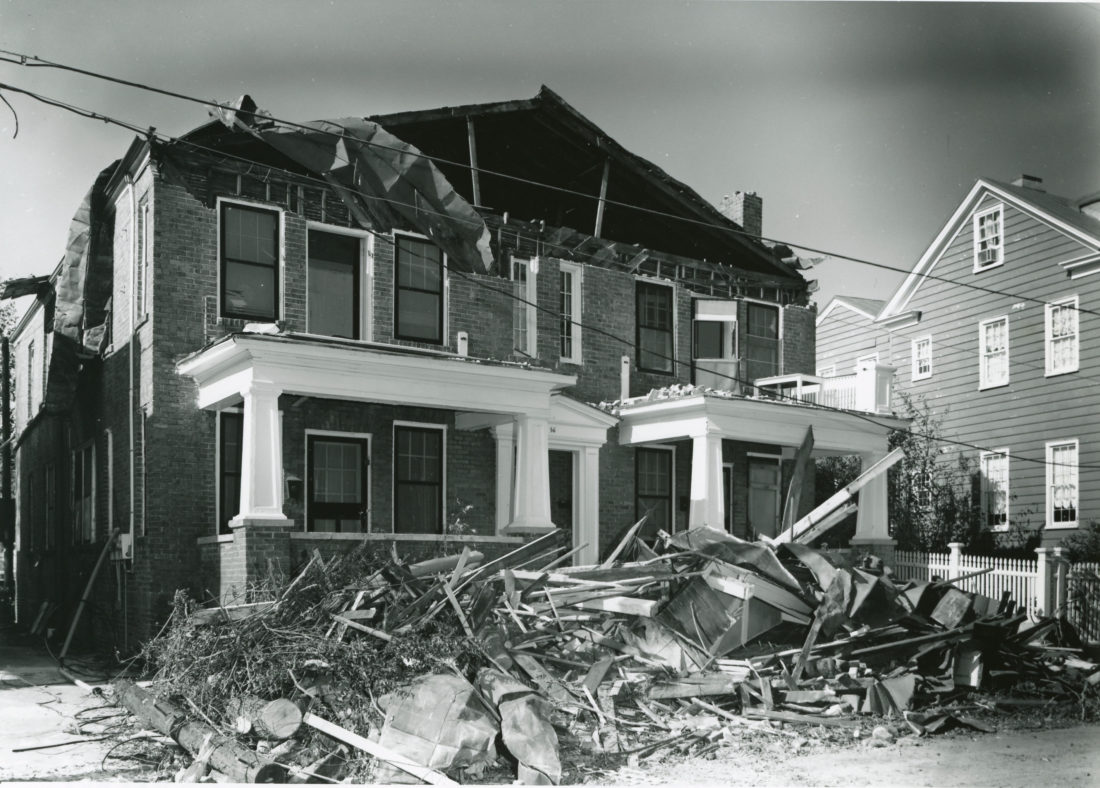
The wreckage at 56 Laurens Street, just west of East Bay Street downtown.
Photo: Photo by Jack E. Boucher courtesy of Historic Charleston Foundation
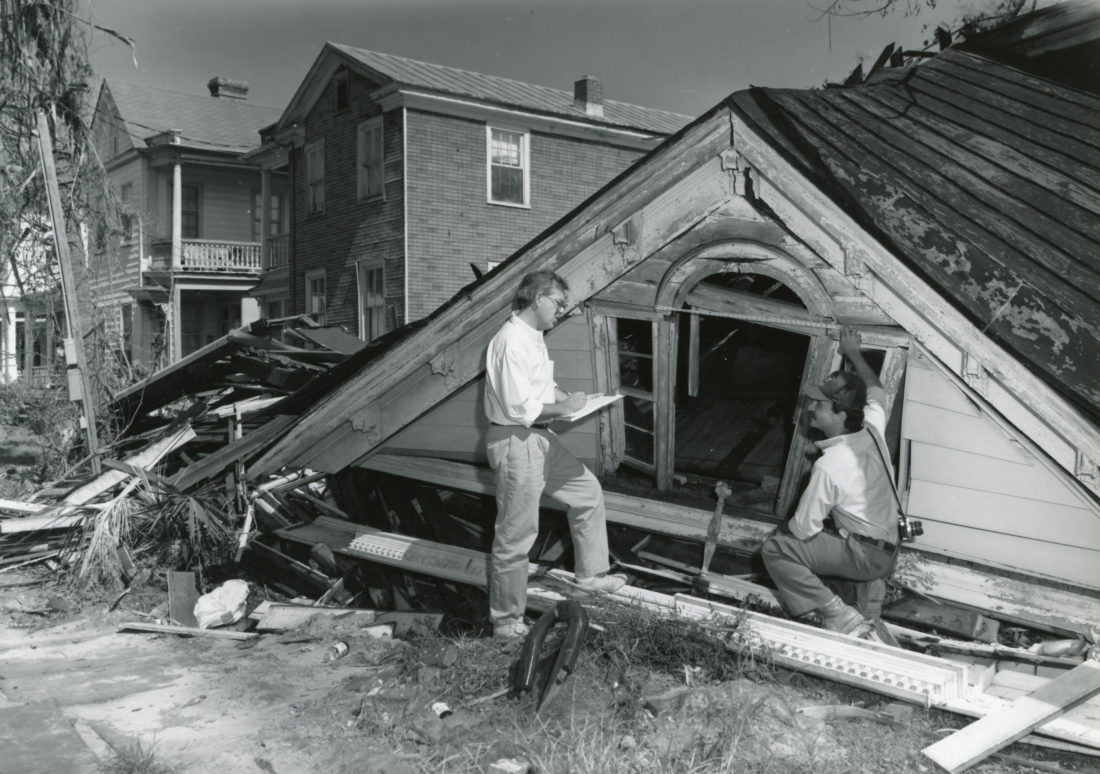
Two men survey a collapsed house on Rutledge Avenue.
Photo: Photo by Jack E. Boucher courtesy of Historic Charleston Foundation
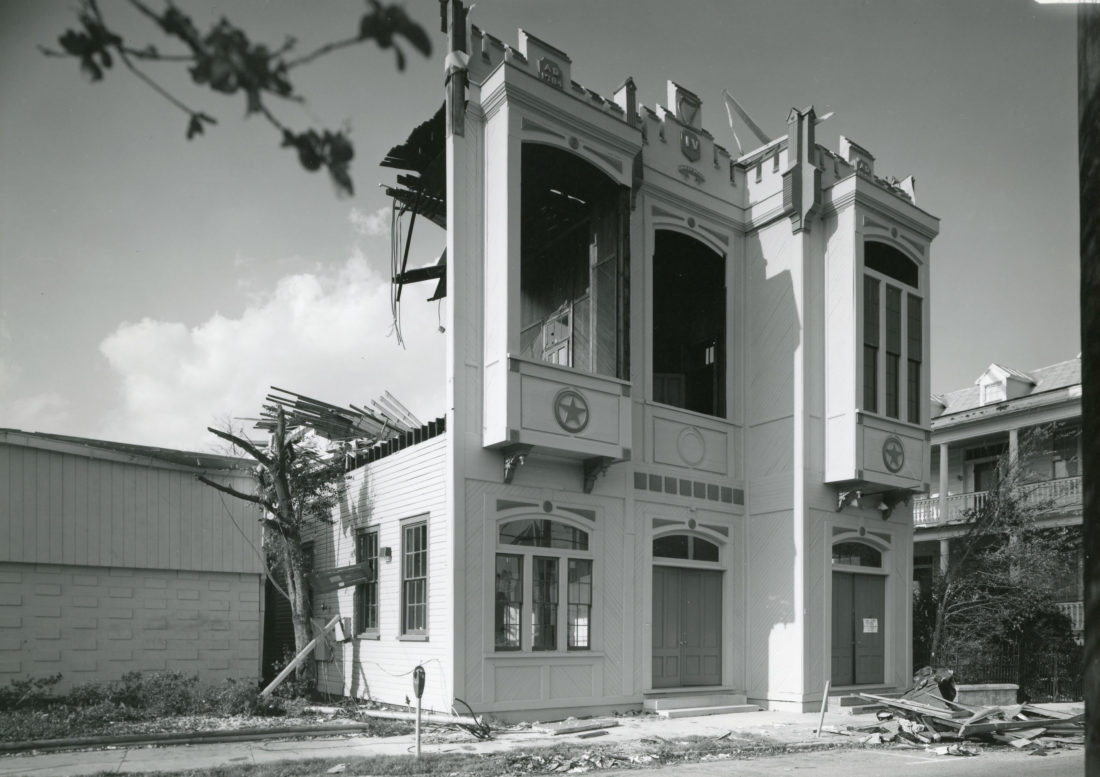
The facade of the Irish Volunteers Armory on Vanderhorst Street stays standing.
Photo: Photo by Jack E. Boucher courtesy of Historic Charleston Foundation.
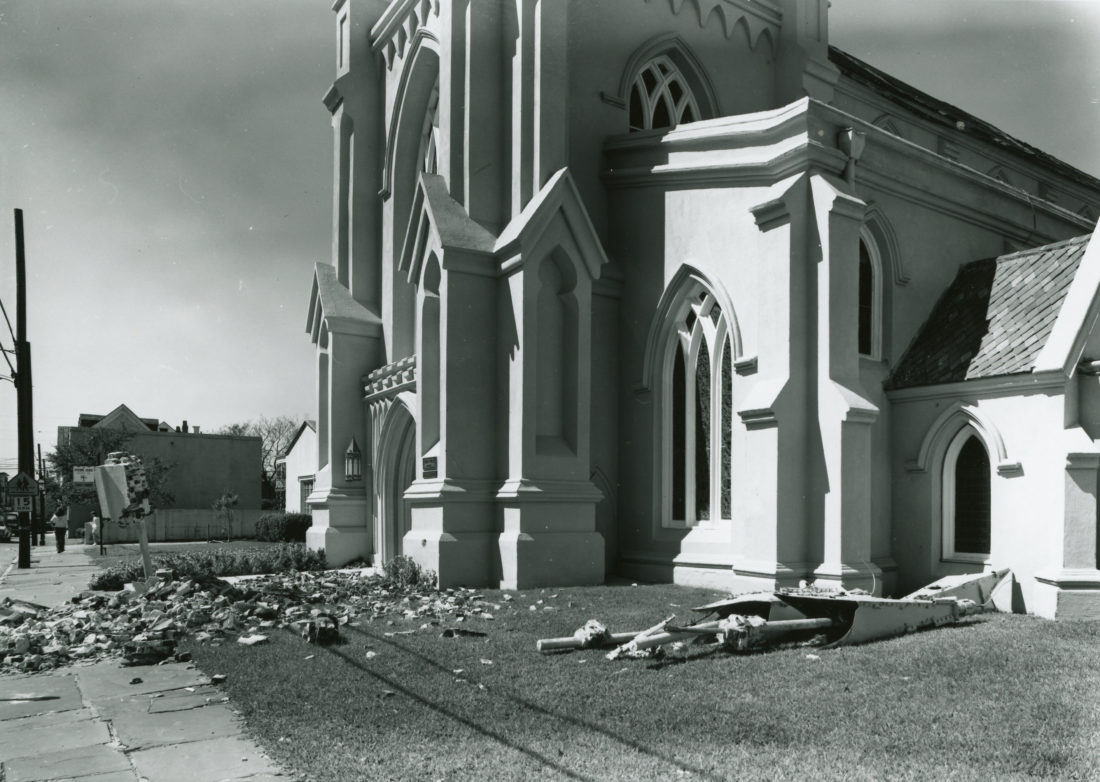
Debris is strewn about the lawn of the Grace Church Cathedral, founded in 1846.
Photo: Photo by Jack E. Boucher courtesy of Historic Charleston Foundation
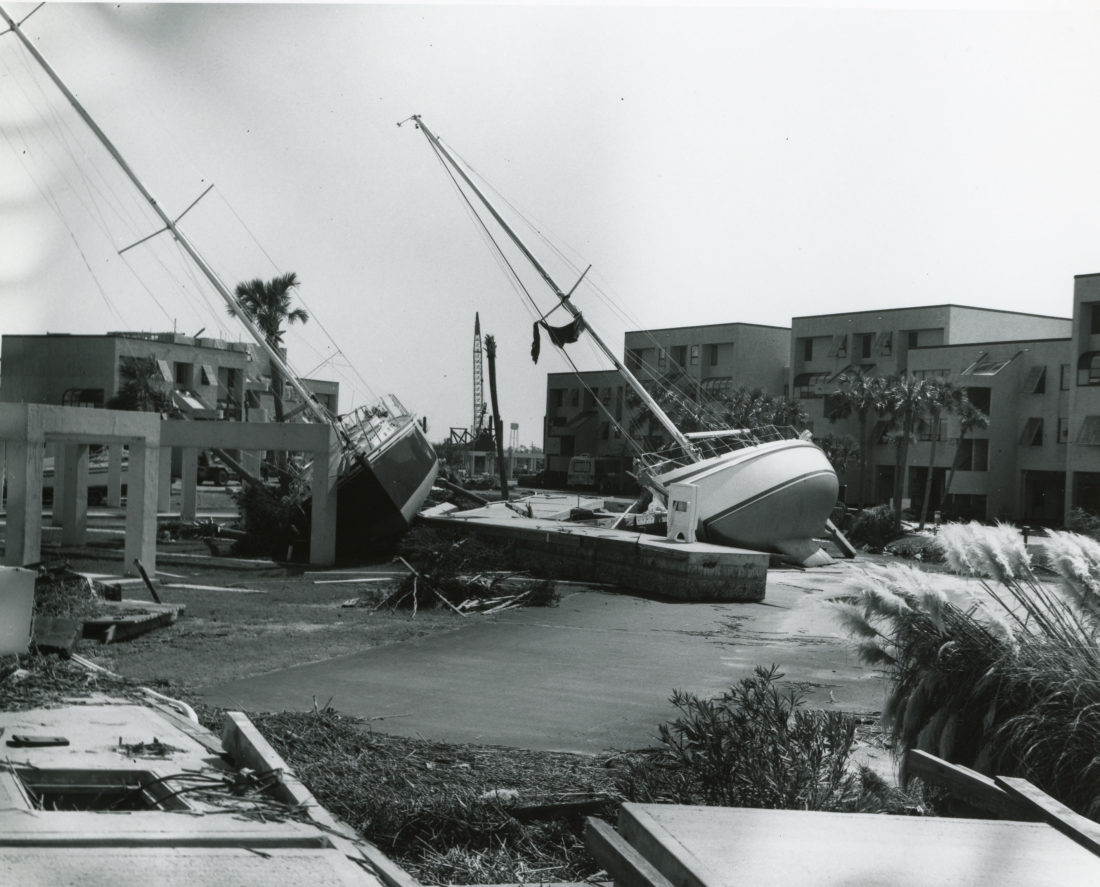
Sailboats overturned at condominiums on Sullivan’s Island.
Photo: Photo by Jack E. Boucher courtesy of Historic Charleston Foundation
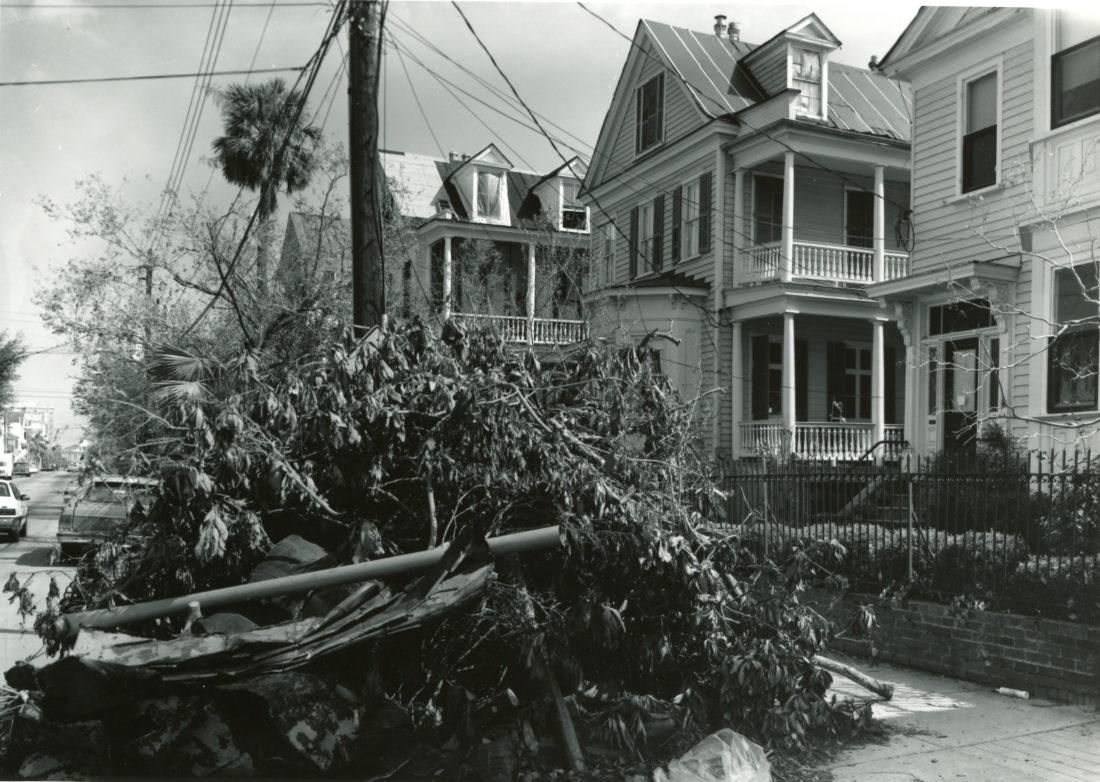
Debris from Hurricane Hugo in stacks outside houses on Broad Street.
Photo: Photo by Jack E. Boucher courtesy of Historic Charleston Foundation
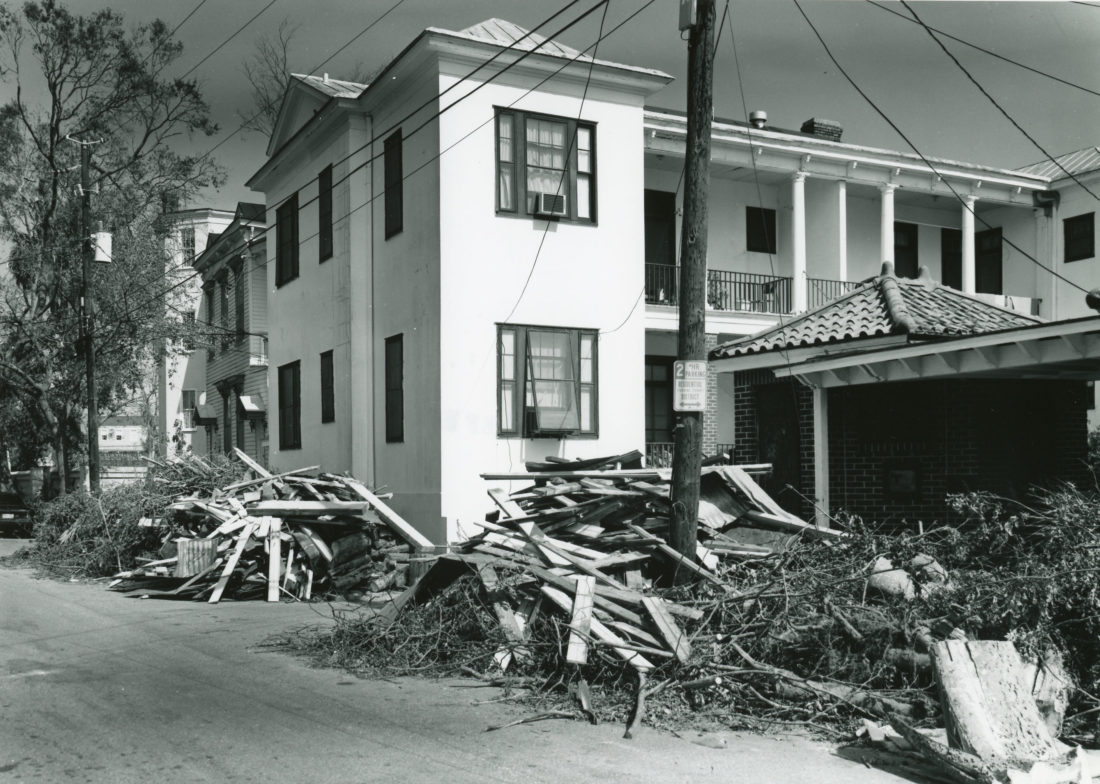
Piles of branches and wood lined up alongside homes on Smith Street.
Photo: Photo by Jack E. Boucher courtesy of Historic Charleston Foundation
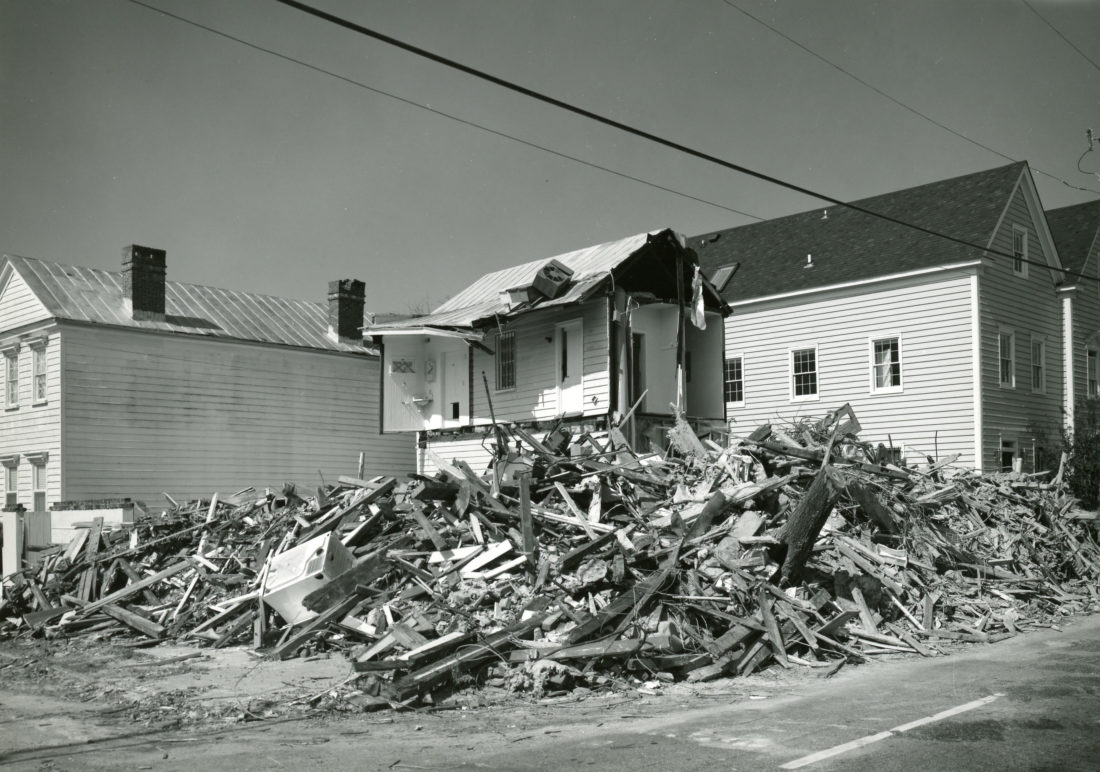
Eastside homes in ruins.
Photo: Photo by Jack E. Boucher courtesy of Historic Charleston Foundation
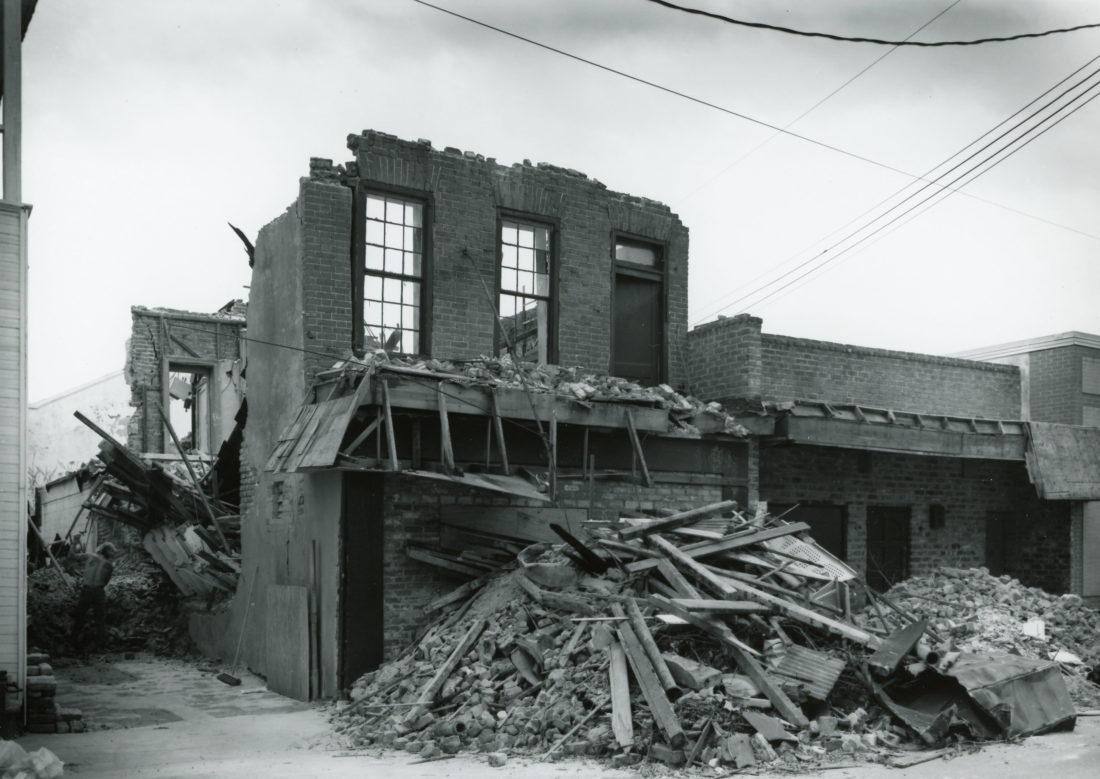
A building reduced to rubble.
Photo: Photo by Jack E. Boucher courtesy of Historic Charleston Foundation


